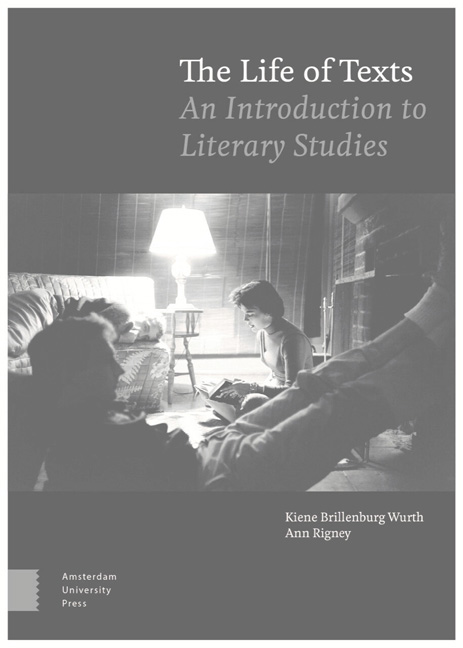Foreword
Summary
The Life of Texts: our title has been inspired by the work of Ferdinand de Saussure (1857-1913), one of the founders of modern cultural studies. Roughly a hundred years ago he set out his dream of a new branch of inquiry which he called ‘the science of the life of signs in society.’ Where he was interested in signs in general, we are specifically interested in literary texts. But like him, we too are interested in their cultural and social ‘life.’
This means that we will not be approaching literature simply as a collection of novels and poems on a virtual bookshelf. Instead, we will examine how those novels, poems and all sorts of other texts ‘live’ in society: how people write and how they read, but also how one text inspires another text, and how stories and poems migrate from one medium to another. We will be asking how it is that some texts fascinate people so much that they have long cultural lives. They are reproduced and passed on to others in the form of new editions, in adaptations to film and theatre, in classroom settings, in our leisure hours, and, last but not least, in the ways we look at the world and act out our lives. We show how literature matters and offer a toolkit for literary studies to matter as well.
In this introduction to the academic study of literature, we offer a first conceptual and methodological toolbox with which to describe ‘the life of texts’ and explain their role in society. Rather than present a history of the discipline, our handbook is designed around particular issues in the field. We begin by positioning literary studies within the broader field of the humanities. Each of the following chapters concentrates on a different aspect of literature and introduces the key debates and the key concepts relevant to its study. The key concepts have also been indicated in the margins and collected for ease of reference in the glossary which follows the final chapter. Where relevant we link specific concepts to schools of thought; asterisks* in the main text will lead you to the overview of schools at the back of the book.
- Type
- Chapter
- Information
- Life of TextsAn Introduction to Literary Studies, pp. 13 - 14Publisher: Amsterdam University PressPrint publication year: 2019



